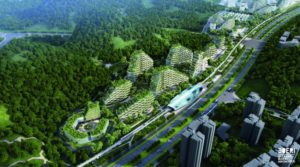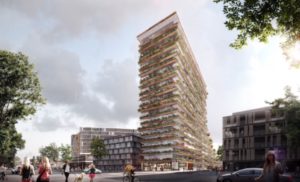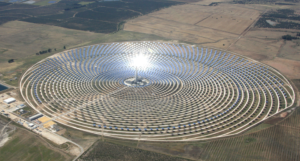Some exciting innovative ideas developing in Australia
Switzerland is number one in innovation, Sweden second and United Kingdom third in the world. Australia stands at nineteenth position. Still a lot of innovative ideas come by combining engineering with medicine and trying to find solutions to medical problems.
Acoustic Wearable Belt to diagnose gut disorders

Current methods for diagnosing IBS typically include invasive tests, such as colonoscopy to exclude IBD and other serious diseases. These tests are costly, uncomfortable and carry risks, and still do not provide a positive diagnosis for IBS.
The Noisy Guts Project is the brainchild of Nobel Laureate, Prof Barry Marshall. The team are developing an acoustic belt that records gut noises over time so doctors can accurately screen, diagnose and monitor gut disorders and diseases. The sounds will be combined with data on heart rate, skin temperature and skin galvanic response (sweating) for analysis. The belt will provide doctors with a new, accurate and non-invasive approach to IBS diagnosis and screening for IBD. It will reduce the number of IBS patients on waiting lists for gastroenterologists. It will also reduce the time delay in diagnosis of patients with physical diseases.
My Golgi System gives real-time posture feedback to help save you from back pain and back injuries
A team of biomedical scientists are looking into a system to better measure and manage the causes of back pain by tracking posture through a therapeutic tape-based concept. The solution involves a wearable set-up including tape and a Bluetooth-enabled microcontroller attached. Changes in posture are detected and alerts are sent to a user’s phone when there’s a potential problem. It shrinks the amount of time between potentially problematic physical behaviour and a warning (usually during a trip to a specialist) to cut it out.
Living Vertical Forests:

In the Liuzhou district currently under construction amidst the mountains of the Guangxi region in southern China, human being are outnumbered by plants. Every building being built there will also double as a vertical forest. Every balcony contain trees and every roof will be covered in greenery. The Liuzhou city will have buildings which architect, founder Stefano Boeri, structures liveable for families and trees that he calls ”˜vertical forests’. There are challenges in such a concept of having trees living upto 110m above ground height on balconies exposed to wind, rain and more.

In Sydney, Japanese architect Kengo Kuma’s design submitted in partnership with Australian architecture firm Koichi Takada Architects, has been named the winner in a competition to design Crown Group’s new tower for Sydney’s Waterloo.
Forming part of a five-building development in Waterloo which also includes three buildings designed exclusively by Koichi Takada Architects and a building designed by Sydney-based architects Silvester Fuller, the 19-storey tower will feature a cantilevered infinity-edge rooftop pool, gym and community room with a plant-filled, green exterior designed to emulate a stacked forest.
The development at 48 O’Dea Avenue Waterloo will comprise 384 luxury apartments across five buildings, ranging 4 to 19 storeys and a mix of restaurants, cafes and shops.
Overseen by the City of Sydney, a competition to design the development’s tallest building attracted a high-calibre of entries were judged by a panel of experts including independent architects, assessing architectural design excellence.
Aurora Solar Thermal Power Station in Port Augusta

SolarReserve’s $650 million Aurora solar thermal power station project has been granted development approval by South Australia’s State Government.
The facility, to be constructed 30 kilometers north of Port Augusta, will be the largest of its type in the world and is expected to generate 500 gigawatt-hours of electricity annually.

According to the Australian Energy Market Operator (AEMO), South Australia’s total electricity consumption in 2016-17 was 12,442 gigawatt hours. Based on that figure, this single plant could contribute around 4% of SA’s total electricity requirements.
Instead of conventional solar panels, the Aurora plant will use more than 12,000 automatic, individually controlled dual-axis tracking heliostats (mirrors) to reflect the sun’s energy onto a receiver at the top of a central tower that will be up to 240 metres high. Liquid salt will be pumped through the tower, attaining a temperature of around 560C. The heated salt will be stored and used to create steam to drive a turbine that generates electricity, and the steam then condensed for re-use.
Short URL: https://indiandownunder.com.au/?p=10991
